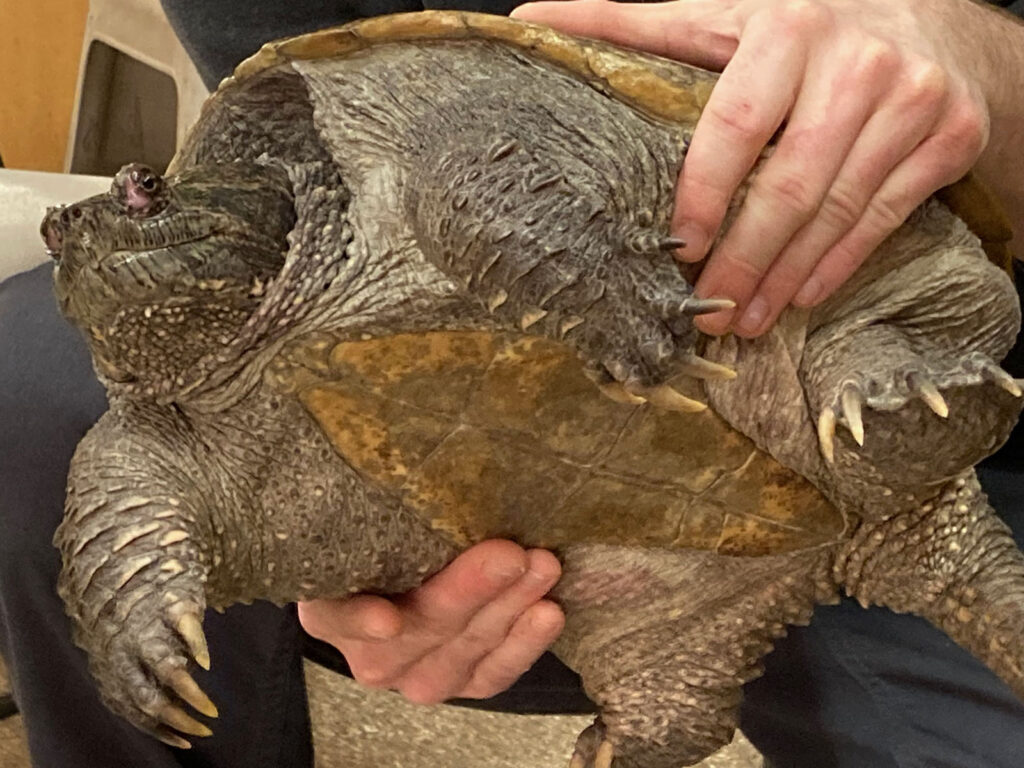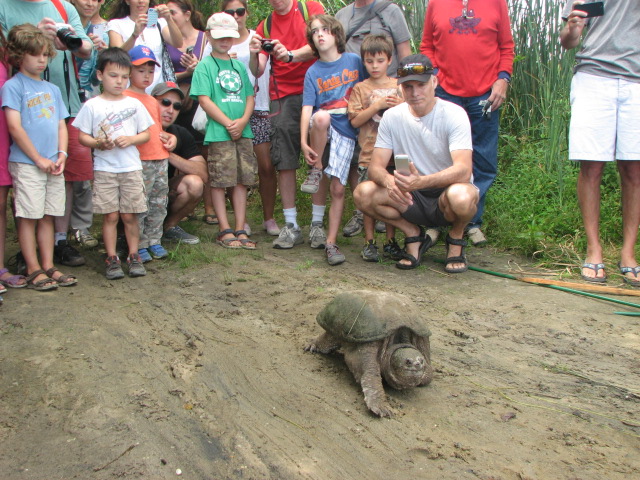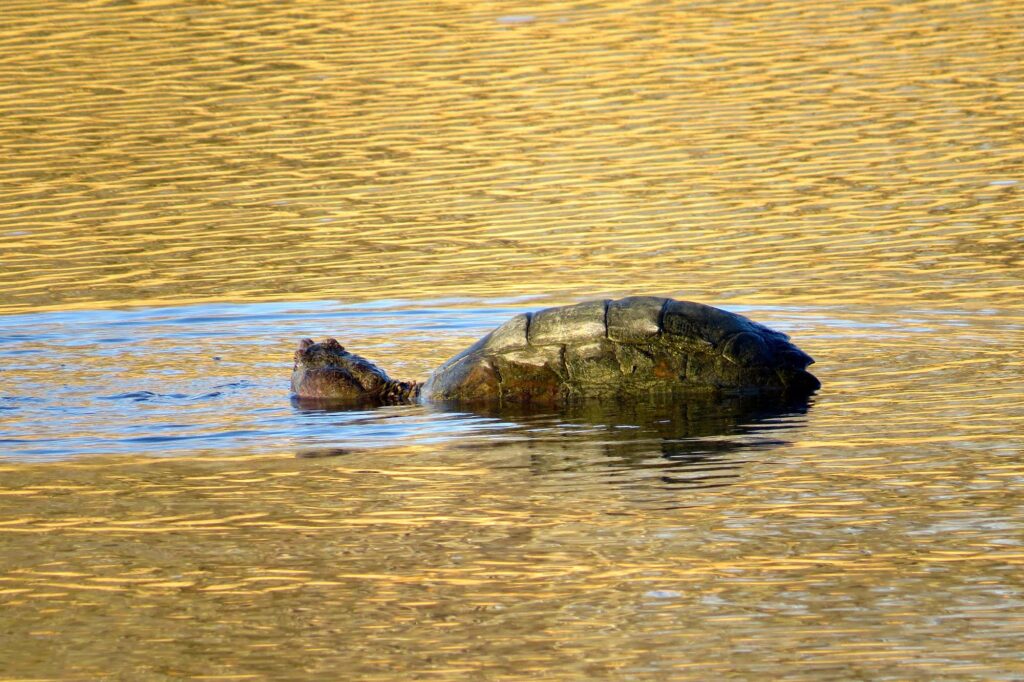Georgica Pond has a lot of snapping turtles. Their scientific name is Chelydra serpentina and they are a most remarkable creature. Truly ancient, they evolved during the late Cretaceous period along with the dinosaurs (66 million years ago) and are the common ancestor of 80% of modern turtles today. How have they survived so long and what makes them different from other turtles and so successful?
Life History
Their range stretches from southern Canada to Florida and they can be found in almost every freshwater or brackish pond on Long Island. Nominated by elementary school children, the snapping turtle is the official New York State reptile. They are referred to as semi-aquatic as they spend different parts of their life cycle in the water and on land. They mate in the pond and then the female comes ashore, usually to the same place, in late spring to lay her eggs in a sandy hole she has prepared. The eggs are left on their own and when the hatchlings emerge, they are also on their own. The egg and hatchling stage are the two times in the life of a snapping turtle when they are vulnerable to predation. After a season of gorging on whatever food they can find—they are opportunistic omnivores (including fish, crabs, young waterfowl, carrion, vegetation including algae)—they hunker down in the mud and hibernate all winter at the bottom of the pond. As a top predator they play an important role in maintaining the balance of the ecosystem.
Behavior
A full grown snapping turtle is a formidable beast. They are comfortable in water and unlikely to be aggressive unless provoked. Don’t do it. Fingers have been lost. On land, they are more “assertive” and there is a good reason. Unlike other turtles, they cannot retract completely into their shell for protection so they must defend themselves. Their strong jaw, sharp beak and large claws do the trick. If you see a snapping turtle while kayaking or paddle boarding on Georgica Pond, just give them space. They won’t attack or follow you.
For an excellent overview of the snapping turtle, we suggest the article, In the company of Dinosaurs by William S. Hoffman which appeared in the New York State Conservationist, April 2017.
Meet Vicky


Jake Kushner of SOFO holds Vicky safely. Don’t try this at home! Photos by Sara Davison.
Vicky was hit by a car on Shelter Island (automobiles are adult snapping turtles only predator) and luckily, she was taken to the Turtle Rescue of the Hamptons on the North Fork. Her injury resulted in neurological problems leading to seizures so she could not be released back into the wild. After her rehabilitation she became a permanent resident at the South Fork Natural History Museum (SOFO), where they take excellent care of her. She is very popular with visitors. At SOFO she is fed about 10 silversides with turtle pellets every other day which provide all the nutrition she needs. According to Jake Kushner, the Environmental Educator and Reptile & Amphibian specialist at SOFO, she is a bit of a picky eater, but very docile and a great snapping turtle ambassador. SOFO hosts an annual “Search for Snapping Turtles” in September which is definitely worth catching with the kids and meeting a snapping turtle face to face.

Snapper Soup
Because they are so common they are classified as a game species in New York State and there is a hunting season for them from July 15-September 30 which avoids most of their nesting time. Interestingly, you may not trap them but must hunt them with a gun or bow! In some areas of the country snapping turtle is eaten and “Snapper Soup” is a delicacy. It is usually served with sherry and is quite tasty. You can order a can of Bookbinder’s Philadelphia style Snapper Soup on the internet or go to the famous Commander’s Palace restaurant in New Orleans and order a bowl. Back at SOFO, Jake Kushner said he would not eat snapper soup and cautioned that top predators often bioaccumulate toxins.
When you think about the important role snapping turtles play in the ecosystem and what survivors they are, you have to respect them and they become quite EASY TO LOVE.

Special thanks to Jake Kushner and the South Fork Natural History Museum
